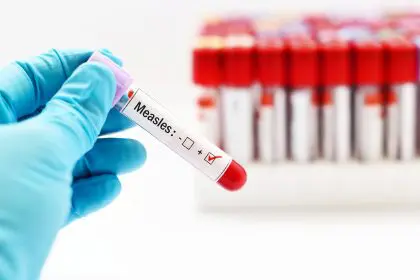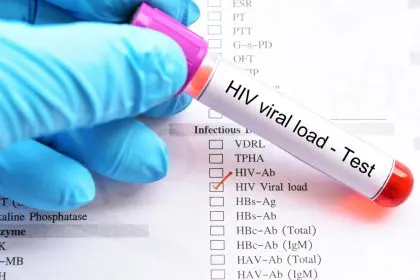A disturbing link between common household plastics and thousands of heart disease deaths has emerged from recent research, with evidence suggesting Black communities face disproportionately higher risks. The findings reveal how chemical compounds in everyday plastic products may silently contribute to cardiovascular mortality, creating an uneven health burden that follows historical patterns of environmental inequity.
The hidden dangers in everyday items
Researchers have identified concerning connections between chemicals commonly found in household plastics and increased risk of cardiovascular disease. These substances, present in everything from food containers to furniture, appear to interfere with normal heart function through various biological mechanisms. The chemicals migrate from plastic products into our bodies through food, water, and even household dust.
The global impact is substantial, with thousands of deaths annually attributed to complications arising from long-term exposure to these compounds. Primary culprits include phthalates used to make plastics flexible, bisphenols found in hard plastics, and per- and polyfluoroalkyl substances (PFAS) used in non-stick and water-resistant applications. These chemicals can disrupt hormonal balance and trigger inflammatory responses that damage cardiovascular tissues over time.
Five ways Black communities face heightened risks
- Environmental justice disparities – Industrial facilities that manufacture or process plastics are disproportionately located in or near predominantly Black communities. This proximity creates elevated exposure levels through air, soil, and water contamination, making everyday life more hazardous regardless of consumer choices.
- Limited access to safer alternatives – Communities with lower average incomes often have fewer retailers offering plastic-free alternatives. Black neighborhoods frequently face “retail deserts” where affordable stores selling glass, stainless steel, or other safer alternatives remain scarce, making plastic avoidance nearly impossible.
- Housing quality factors – Older housing stock common in many historically Black neighborhoods may contain deteriorating plastic materials that release higher levels of harmful chemicals. Vinyl flooring, plastic wall coverings, and older plastic plumbing all contribute to increased household exposure when they begin breaking down.
- Healthcare access barriers – Black Americans face documented disparities in healthcare access, meaning early signs of plastic-related cardiovascular problems may go undetected or untreated. Without regular preventive care, the cumulative damage from plastic chemical exposure progresses further before intervention.
- Compounding environmental stressors – Plastic pollution rarely exists in isolation. Many Black communities simultaneously confront multiple environmental hazards including air pollution, lead exposure, and industrial waste. These combined stressors amplify cardiovascular risks beyond what plastic exposure alone might cause.
The science of plastics and heart damage
The mechanisms linking plastic chemicals to heart disease operate at the cellular level. Phthalates can disrupt normal endocrine function and promote inflammation throughout the cardiovascular system. Bisphenols, including the well-known BPA and its substitutes, interfere with hormonal systems that regulate heart rhythm and blood pressure.
These chemicals have demonstrated abilities to increase cholesterol levels, promote arterial plaque formation, and trigger irregular heartbeats in laboratory studies. The cumulative effects manifest as increased rates of hypertension, coronary artery disease, and ultimately, heart failure or fatal cardiac events.
Particularly concerning is how these chemicals interact with existing cardiovascular risk factors that already affect Black Americans at higher rates, including hypertension and diabetes. This creates a potential multiplier effect where plastic exposure may cause more severe outcomes in populations already vulnerable to heart disease.
Unequal exposure through everyday activities
The disparities in plastic exposure extend into daily routines. Food systems in many predominantly Black neighborhoods rely heavily on plastic packaging, with fresh unpackaged produce less available than in more affluent areas. Convenience stores and discount retailers that use extensive plastic packaging often represent the primary food access points in these communities.
Even basic water consumption presents different risk profiles. Concerns about tap water quality in many urban areas lead to increased reliance on bottled water in plastic containers, creating another pathway for chemical exposure. When these bottles are stored in warm environments, chemical leaching accelerates, further increasing exposure.
Occupational settings add another dimension to this issue. Workplaces with high plastic exposure, including certain manufacturing, retail, and service positions, often employ higher percentages of Black workers, creating additional exposure scenarios beyond the home environment.
The historical context of unequal environmental burdens
The current distribution of plastic-related health risks follows historical patterns of environmental racism, where communities with less political and economic power face greater pollution burdens. Zoning decisions, industrial siting policies, and weak regulatory enforcement in Black neighborhoods have created cumulative exposure scenarios that span generations.
This historical context makes addressing plastic exposure not simply a matter of individual consumer choices but a structural environmental justice issue requiring policy-level interventions. The legacy of redlining and residential segregation continues to influence who lives nearest to plastic production facilities and waste sites.
The regulatory oversight of these facilities also shows troubling disparities, with enforcement actions and penalties typically lower in minority areas compared to predominantly white communities with similar violation histories. This regulatory gap allows ongoing exposure to continue with minimal accountability.
Economic factors compounding the threat
Socioeconomic realities create further disparities in plastic exposure. Limited budgets often necessitate purchasing lower-cost food items typically packaged in more plastic. The “poverty tax” extends to food packaging, where bulk purchases with less packaging per unit require more upfront money that many households cannot spare.
Housing options also reflect economic constraints that increase plastic exposure. Rental properties in lower-income areas often feature more vinyl flooring, plastic window treatments, and other inexpensive plastic building materials that can release harmful chemicals, especially as they age and deteriorate.
The fast fashion industry, which heavily utilizes synthetic plastic-based fabrics, markets aggressively to budget-conscious consumers. These polyester, nylon, and acrylic garments shed microplastic fibers during washing and wearing, creating another exposure pathway particularly relevant in communities where clothing budgets are limited.
Community responses and emerging solutions
Despite these challenges, community-based initiatives are emerging to address plastic-related health disparities. Grassroots environmental justice organizations increasingly incorporate plastic pollution awareness into their advocacy work. Community health workers are developing educational programs specifically addressing how to minimize plastic exposure through practical, affordable steps.
Urban gardening initiatives in many Black communities provide both fresh produce with minimal packaging and educational opportunities about reducing plastic dependence. Some community programs focus on creating plastic-free spaces where residents can learn about alternatives and their benefits.
Policy solutions show potential for addressing these disparities through targeted interventions. Environmental justice assessments that consider cumulative impacts rather than single-pollutant approaches could better protect vulnerable communities. Stricter regulations on plastic chemicals with known cardiovascular effects would benefit all populations but particularly those facing disproportionate exposure.
The path toward health equity
Addressing the unequal burden of plastic pollution requires a multifaceted approach acknowledging both environmental and social determinants of health. Research must specifically examine how plastic-related risks manifest in Black communities rather than assuming uniform effects across populations.
Healthcare systems can contribute through enhanced screening and early intervention in communities with documented plastic exposure risks. Cardiovascular monitoring programs adapted for high-exposure populations could detect and address emerging problems before they result in fatal outcomes.
Regulatory frameworks need significant strengthening, particularly around chemicals already suspected of cardiovascular toxicity. The precautionary principle—removing harmful substances from use until proven safe rather than allowing use until proven dangerous—would better protect vulnerable populations currently bearing disproportionate risks.
Most importantly, communities most affected must have meaningful roles in developing solutions. The lived experience of residents in high-exposure areas provides essential context for creating effective interventions that acknowledge real-world constraints and opportunities.
As researchers continue uncovering connections between everyday plastics and heart disease mortality, ensuring that these findings translate into equitable protections remains an urgent public health priority. Without deliberate attention to existing disparities, even well-intentioned plastic safety reforms risk perpetuating the unequal health burdens that already divide our communities.













